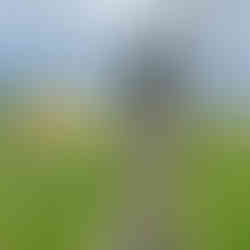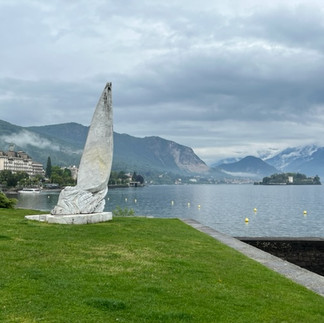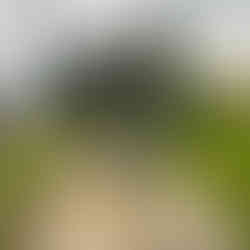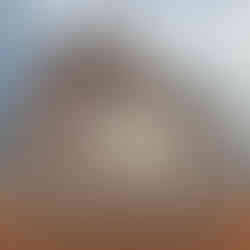Statues of Stresa - Statue di Stresa
- Maria Scuor
- Jul 20, 2022
- 14 min read
Updated: Aug 22, 2022
When you walk the promenade in Stresa you see many statues. Some have plaques that tell us the reason why the statue was created but some are just sitting there for us to admire. I wanted to learn more about the history of this great city and it's statues so in no particular order here are the statues I've photographed and researched why they were placed where they are.
Quando si cammina sul lungomare di Stresa si vedono molte statue. Alcuni hanno targhe che ci dicono il motivo per cui è stata creata la statua, ma alcuni sono semplicemente seduti lì per noi da ammirare. Volevo saperne di più sulla storia di questa grande città e delle sue statue, quindi in nessun ordine particolare qui ci sono le statue che ho fotografato e ricercato perché sono state collocate dove si trovano.
La Sirenetta (Mermaid) di Stresa is located on the lakefront in the square in front of the pier in Stresa. It was sculpted in Baveno granite by Bavarian sculpture Raffaele Polli and inaugurated on September 12, 1992. The granite which has dots in it was a challenge for Polli to carve compared if he used marble. But the whole idea was to use the granite that was being harvested from the Baveno quarry at the time and was highly sought after. Mermaids, because of their myth or fables are loved my everyone and this Sirenetta lights up the square and many take a selfie with her.
La Sirenetta di Stresa si trova sul lungolago nel piazzale antistante il molo di Stresa. Fu scolpito in granito di Baveno dallo scultore bavarese Raffaele Polli e inaugurato il 12 settembre 1992. Il granito che presenta dei punti era una sfida per Polli da scolpire rispetto all'utilizzo del marmo. Ma l'idea era quella di utilizzare il granito che all'epoca veniva raccolto dalla cava di Baveno ed era molto ricercato. Le sirene, per via del loro mito o delle loro favole, sono amate da tutti e questa Sirenetta illumina la piazza e in tanti si fanno selfie con lei.
Statue of Re (King) Umberto I di Savoia sits on the promenade almost across Hotel des Iles Borromees. Umberto was the king of Italy from January 9, 1878 until his assassination on July 29, 1900. He had a reign of of turmoil due to the consequences of his policies. His plans to colonize Africa and China, lavish expenditures on defense forces, lack of educational aid, meager support of his citizens, and the rise of prices for essential commodities caused a poor performing economy which became very unpopular with his people.
On the positive side he enacted the Triple-Alliance agreement between Germany, Austria-Hungary and Italy in May of 1882. Because Stresa was booming with tourism at the time of Umberto's reign they erected the statue in his honour. The statue features as bust of Umberto, flanked by Liberty-style statues on each side. On one side a wounded person is being held up by another person who glances up at Umberto, and on the other side, a person looking stronger wearing a helmet that looks like a hawk.
La statua di Re Umberto I di Savoia si trova sul lungomare quasi di fronte all'Hotel des Iles Borromees. Umberto fu re d'Italia dal 9 gennaio 1878 fino al suo assassinio il 29 luglio 1900. Ebbe un regno di turbolenze a causa delle conseguenze delle sue politiche. I suoi piani per colonizzare l'Africa e la Cina, le spese sontuose per le forze di difesa, la mancanza di aiuti all'istruzione, lo scarso sostegno dei suoi cittadini e l'aumento dei prezzi delle materie prime essenziali hanno causato un'economia con scarse prestazioni che è diventata molto impopolare tra la sua gente.
Sul lato positivo, nel maggio del 1882 promulgò l'accordo di Triplice Alleanza tra Germania, Austria-Ungheria e Italia. Poiché Stresa era in piena espansione turistica all'epoca del regno di Umberto, eressero la statua in suo onore. La statua si presenta come busto di Umberto, affiancato su ogni lato da statue in stile liberty. Da una parte una persona ferita è sorretta da un'altra persona che alza lo sguardo su Umberto, e dall'altra parte una persona che sembra più forte con indosso un elmo che sembra un falco.
In the public gardens on the promenade of Stresa there is a beautiful fountain and on each side there is a statue. If looking at the fountain towards the water, on the left, we find a statue of Antonio Rosmini. This statue was erected in 1955, to honour a century of his death. He was philosopher, and considered the greatest Italian thinker in the 19th century. He lived in the Ville Ducale, which is the oldest Villa in Italy.
In 1857, the villa was the residence of Elizabeth of Saxony, Duchess of Genoa. She was the mother of Margherita who married Umberto I of Savoy and became the queen of Italy. To the right of the fountain the statue of Elisabetta di Savoia was was inaugurated on Saturday 4 October 1930 in her honour.
Nei giardini pubblici sul lungomare di Stresa c'è una bella fontana e su ogni lato c'è una statua. Se guardiamo la fontana verso l'acqua, sulla sinistra, troviamo una statua di Antonio Rosmini. Questa statua fu eretta nel 1955, per onorare un secolo della sua morte. Fu filosofo e considerato il più grande pensatore italiano dell'Ottocento. Abitò nelle Ville Ducale, che è la Villa più antica d'Italia.
Nel 1857 la villa fu residenza di Elisabetta di Sassonia, duchessa di Genova. Era la madre di Margherita che sposò Umberto I di Savoia e divenne regina d'Italia. A destra della fontana fu inaugurata sabato 4 ottobre 1930 in suo onore la statua di Elisabetta di Savoia.
On the promenade in Piazza Guglielmo Marconi is the statue "Attesa" (Waiting) by Koji Koh Emon Hattor. Born in Japan in 1947 and he studied art at Brera and worked with various materials. His works can be seen in many places throughout Italy, Europe, and Japan. Attesa was sculpted in 2007 as part of the International Sculpture Symposium by international artists and depicts a lady in waiting. La Vela and Torso which I also review in this blog were part of the three statues sculpted for the lakefront.
The history on these three statues is in May of 2007, three marble blocks of the same size were given to three internationally known sculptors. These three Koji Koh Emon Hattor, Manuel Alvarez and Gino Corsanini worked side by side at Villa La Palazzola on the lungolago from May 12 to May 27. They used a technique "togliere" to remove, the technique typical of stone sculptors. This unique symposium allowed the artists to collaborate and exchange ideas and it allowed tourists to watch step by step how a sculpture comes to life.
Sul lungomare di Piazza Guglielmo Marconi si trova la statua "Attesa" di Koji Koh Emon Hattor. Nato in Giappone nel 1947, ha studiato arte a Brera e lavorato con vari materiali. Le sue opere possono essere viste in molti luoghi in tutta Italia, Europa e Giappone. Attesa è stata scolpita nel 2007 nell'ambito del Simposio Internazionale di Scultura da artisti internazionali e raffigura una dama di compagnia. La Vela e il Torso che recensisco anche in questo blog facevano parte delle tre statue scolpite per il lungolago.
La storia di queste tre statue è nel maggio del 2007, tre blocchi di marmo della stessa dimensione sono stati dati a tre scultori di fama internazionale. Questi tre Koji Koh Emon Hattor, Manuel Alvarez e Gino Corsanini hanno lavorato fianco a fianco a Villa La Palazzola sul lungolago dal 12 al 27 maggio. Hanno utilizzato una tecnica "togliere" per rimuovere, la tecnica tipica degli scultori della pietra. Questo simposio unico ha permesso agli artisti di collaborare e scambiare idee e ha permesso ai turisti di osservare passo dopo passo come una scultura prende vita.
Here is Attesa - Qui è Attesa:
The second of the three statues is La Vela (The Sail) which sits at Piazza Guglielmo Marconi and was sculpted by Gino Corsanini in 2007. Gino was born in Ortonovo in 1947 and as with this statue, marble is the material with which he makes most of his large sculptures.
This statue has a story with it. There is a commemorative plaque "Day of Remembrance" dedicated to Norma Cossetto, in 2021. Norma was born in Croatia where her parents lived and her father was the leader of Fascist National Party and eventually got transferred to Trieste Italy.
Norma studied Italian Literature at University of Padova and in 1941 joined a Fascist Group in Pula, Istria County in Croatia. She became a substitute teacher and in 1943 was writing her degree thesis "Istria Rossa" (Red Istria) which is a rich ore of reddish bauxite in Istria. She was in Pazin, Croatia. At the time her family home was plundered by Yugoslavian and Italian resistance fighters.
Soon after she was summoned by the resistance as they wanted her to join but she refused to deny her allegiance to Fascism. She became a prisoner and she as well as other prisoners were tortured, rapped, killed and thrown in a foiba. Therefore this memorial is to remember the time of Foibe massacres and ethnic cleansing of Italians by Yugoslavs in Istria. It is a beautiful statue that has lake and mountains in the background.
La seconda delle tre statue è La Vela che si trova in Piazza Guglielmo Marconi ed è stata scolpita da Gino Corsanini nel 2007. Gino è nato ad Ortonovo nel 1947 e come per questa statua, il marmo è il materiale con cui realizza di più delle sue grandi sculture.
Questa statua ha una storia con essa. C'è una targa commemorativa "Giornata della Memoria" dedicata a Norma Cossetto, nel 2021. Norma è nata in Croazia dove vivevano i suoi genitori e suo padre era il leader del Partito Nazionale Fascista e alla fine si è trasferita a Trieste, in Italia.
Norma ha studiato letteratura italiana all'Università di Padova e nel 1941 si è unita a un gruppo fascista a Pola, nella regione istriana in Croazia. Divenne supplente e nel 1943 stava scrivendo la sua tesi di laurea "Istria Rossa" (Istria Rossa) che è un minerale ricco di bauxite rossastra in Istria. Era a Pisino, in Croazia. All'epoca la sua casa di famiglia fu saccheggiata da combattenti della resistenza jugoslavi e italiani.
Subito dopo fu convocata dalla resistenza perché volevano che si unisse, ma si rifiutò di negare la sua fedeltà al fascismo. Divenne prigioniera e lei, come altri prigionieri, furono torturati, violentati, uccisi e gettati in una foiba. Pertanto questo memoriale è per ricordare il tempo dei massacri delle Foibe e della pulizia etnica degli italiani da parte degli jugoslavi in Istria. È una bella statua che ha il lago e le montagne sullo sfondo.
Here is La Vela - Qui è La Vela:
Torso by Manuel Alvarez is the third statue that was created as part of the 2007 International Sculpture Symposium by international artists. Manuel was born in Spain in 1945, and has lived in numerous places around the world. His sculptures enrich many piazze, from Barcelona to Atlanta, and from Madrid to Venice.
Torso di Manuel Alvarez è la terza statua creata nell'ambito del Simposio Internazionale di Scultura del 2007 da artisti internazionali. Manuel è nato in Spagna nel 1945 e ha vissuto in numerosi luoghi in tutto il mondo. Le sue sculture arricchiscono molte piazze, da Barcellona ad Atlanta, da Madrid a Venezia.
Here is Torso - Qui è Torso:
Stresa has a Palazzo dei Congressi "Conference Centre" which the was opened in 1958 and in 1962 became one of the first conference centres in Italy. Recently it underwent a 4.2 million euro renovation where today it can host any type of events. In front of the building stands the Stresa Palacongressi Statue which was the work of art by Leone Lodi in 1956 as the original building was being built. Leone is known for his contributions to beautify the city of Stresa.
Stresa ha un Palazzo dei Congressi che fu aperto nel 1958 e nel 1962 divenne uno dei primi centri congressi in Italia. Recentemente ha subito una ristrutturazione da 4,2 milioni di euro dove oggi può ospitare qualsiasi tipo di evento. Di fronte all'edificio si trova la Statua del Palacongressi di Stresa che fu opera d'arte di Leone Lodi nel 1956 in quanto l'edificio originario era in costruzione. Leone è noto per i suoi contributi ad abbellire la città di Stresa.
Stresa, Ai Svoi Morti Gloriosi (To the Glorious Dead) statue is on the promenade and stands tall. It commemorates the Stresiani people that lost their lives in different wars of the past century. It was placed on the lakefront in 1923.
The plaques on three sides of the statue list the names individually of the soldiers, as well as the dates of their death. The plaques were added after each historical event that had soldiers die. It truly is an amazing statue of strength and victory rather than a sad tone.
Stresa, la statua di Ai Svoi Morti Gloriosi (Ai Gloriosi Morti) è sul lungomare e si staglia alta. Rievoca gli Stresiani che persero la vita in diverse guerre del secolo scorso. Fu collocato sul lungolago nel 1923.
Le targhe su tre lati della statua elencano i nomi individualmente dei soldati, nonché le date della loro morte. Le targhe venivano aggiunte dopo ogni evento storico che aveva causato la morte di soldati. È davvero un'incredibile statua di forza e vittoria piuttosto che un tono triste.
This statue Monumento "Torri Gemelle" is to honour those that died in 911. It was created in stainless steel by Ilirjan Xhixha (Albanian Sculptor) and dedicated in 2002. Six vertical rectangular columns and six stars represent both the Twin Towers and the American flag. Located on front lawn of the Grand Hotel des Iles Borromees, overlooking Lake Maggiore, it is a stunning piece of art. The plaque next to it has a beautiful dedication:
Questa statua Monumento "Torri Gemelle" è in onore dei caduti nel 911. È stata realizzata in acciaio inossidabile da Ilirjan Xhixha (scultore albanese) e dedicata nel 2002. Sei colonne verticali rettangolari e sei stelle rappresentano sia le Torri Gemelle che la bandiera americana . Situato sul prato davanti al Grand Hotel des Iles Borromees, con vista sul Lago Maggiore, è un'opera d'arte straordinaria. La targa accanto ha una bella dedica:
Memorial to Prof. Renato Boeri was placed on the lakefront on April 28, 2019. Renato and his brother Enzo were part of the resistance Stefanoni brigade. Renato was the commander and their role was to send daily messages out on Radio Salem. The radio station became the official radio of the Volunteer Corps of Freedom. Renato dedicated himself to the profession of neurology and became a pioneer for scientific research and had international fame. The memorial honours his work as a neurologist but mostly is in gratitude for his efforts and struggles for liberation as a partisan commander.
La memoria del Prof. Renato Boeri è stata posta sul lungolago il 28 aprile 2019. Renato e il fratello Enzo facevano parte della brigata di resistenza Stefanoni. Renato era il comandante e il loro ruolo era quello di inviare messaggi quotidiani a Radio Salem. La stazione radiofonica divenne la radio ufficiale del Corpo dei Volontari della Libertà. Renato si dedicò alla professione di neurologo e divenne un pioniere della ricerca scientifica e ebbe fama internazionale. Il memoriale onora il suo lavoro di neurologo, ma soprattutto è in segno di gratitudine per i suoi sforzi e le sue lotte per la liberazione come comandante partigiano.
The statue in memory of the Fallen Stresa Alpini and Monumento al Mulo is located on the lakefront in Corso Umberto I. The Monumento al Mulo was sculpted by Pietro Canonica and sat for years on the square of the Palazzo dei Congressi. Then in 1997, Bavarian sculptor Raffaele Polli sculpted the Alpine and both statues were placed on the lakefront where they now stand.
These statues honour the Alpini in Stresa who were first officially organized in 1872 as a militia to defend the newly formed Republic of Italy's northern borders. Over the years the groups grew in number and in area they covered. Many members spent their entire lives living in the mountains they protected and they they were not only knowledgeable but adept. In both World Wars the Alpini played a significant role not only in these local mountains but advancing to fronts as far away as Russia and Northern Africa. The Alpini if Stresa are extremely proud of this monument.
La statua in memoria dei Caduti Stresa Alpini e Monumento al Mulo si trova sul lungolago in Corso Umberto I. Il Monumento al Mulo fu scolpito da Pietro Canonica e sedette per anni sulla piazza del Palazzo dei Congressi. Poi nel 1997 lo scultore bavarese Raffaele Polli ha scolpito l'Alpino ed entrambe le statue sono state collocate sul lungolago dove si trovano ora.
Queste statue onorano gli Alpini di Stresa che furono ufficialmente organizzati per la prima volta nel 1872 come milizia per difendere i confini settentrionali della neonata Repubblica Italiana. Negli anni i gruppi crebbero di numero e di superficie da coprire. Molti membri hanno trascorso la loro intera vita vivendo nelle montagne che proteggevano ed erano non solo ben informati ma anche esperti. In entrambe le guerre mondiali gli alpini hanno svolto un ruolo significativo non solo su queste montagne locali, ma avanzando su fronti lontani come la Russia e il Nord Africa. Gli Alpini se Stresa sono estremamente orgogliosi di questo monumento.
I can't believe how much I'm learning from researching the statues and monuments of Stresa. All of them have some kind of history. The Fazza is a stone monument with with a plaque inscripted in Arabic, Italian and English. This monument is dedicated to the twining of Stresa and Dubai. Fazza was chosen because it is the stage name the crown prince of Dubai, Sheikh Hamdan bin Mohammed bin Rashid Al Maktoum signs the poems he writes.
Stresa also dedicated part of the promenade on the lakefront as Fazza on August 31, 2013, to seal the friendship between the two cities. The twining ceremony was held to coincide with the Xcat Offshore Powerboat Italian Grand Prix and was attended by a delegation from Dubai. Sadly, two days after me taking this photo the plaque is no longer on the monument.
Non posso credere quanto sto imparando dalla ricerca sulle statue e sui monumenti di Stresa. Tutti loro hanno una sorta di storia. La Fazza è un monumento in pietra con una targa iscritta in arabo, italiano e inglese. Questo monumento è dedicato al gemellaggio di Stresa e Dubai. Fazza è stato scelto perché è il nome d'arte del principe ereditario di Dubai, lo sceicco Hamdan bin Mohammed bin Rashid Al Maktoum firma le poesie che scrive.
Stresa ha dedicato anche parte della passeggiata sul lungolago come Fazza il 31 agosto 2013, a suggello dell'amicizia tra le due città. La cerimonia di gemellaggio si è tenuta in concomitanza con l'Xcat Offshore Powerboat Italian Grand Prix e ha visto la partecipazione di una delegazione di Dubai. Purtroppo, due giorni dopo aver scattato questa foto, la targa non è più sul monumento.
Memorial to the fallen Carciano Soldiers that died in 1918 in Stresa. They will always be remembered for their silence and proud immortality. The memorial was inaugurated in 2018, one hundred years after there deaths.
Monumento ai Caduti Carciano caduti nel 1918 a Stresa. Saranno sempre ricordati per il loro silenzio e la loro orgogliosa immortalità. Il memoriale è stato inaugurato nel 2018, cento anni dopo la morte.
This monumental Rock placed amongst beautiful trees and flowers is in honour of Scholar and Poet Clemente M. Rebora. The top plaque has his date of birth and death and the lower plaque has his poem "Dall'Imagine Tesa" which is considered his masterpiece.
Questa rupe monumentale posta tra splendidi alberi e fiori è in onore dello studioso e poeta Clemente M. Rebora. La targa in alto riporta la sua data di nascita e morte e la targa in basso ha la sua poesia "Dall'Imagine Tesa" che è considerata il suo capolavoro.
Born in Milan in 1885, he was a literary teacher and collaborated with many magazines, including La Voce. His first poems were deep with moral issues which lead him to a spiritual crisis and became a devout Christian in 1936 when he was ordained as a Rosminian priest in Stresa where he died in 1957.
Once a priest Clemente continued to write poems however now reflected on his conversation with God. On the plaques pictured above is the Italian version of the poem. Toward the end of his life Clemente stated that the "image" in the poem was of his own face. Gazing into the unknow and waiting for what would be revealed. He also stated that the last lines where he mentions the whisper, he is stating Gods voice is unnoticeable but is a buzzing that if you listen, you can hear it everywhere. I was able to find this English translation on the internet:
From the aimed image
I am keeping watch on the instant
With imminence of wait
And I am not waiting for anybody
In the lit shade
I am spying upon the bell
Which, imperceptible, is spreading
A pollen of sound –
And I am not waiting for anybody
Between four walls
Astonished of space
More than a desert
I am not waiting for anybody:
But he must come;
He will come, if I resist,
To blossom not seen,
He will come all of a sudden,
When I least realize:
He will come almost pardon
Of what he makes die,
He will come to make me certain
Of his and my treasure,
He will come as a relief
Of my and his pains,
His whisper
Will come, perhaps it is already coming
Nato a Milano nel 1885, fu insegnante di lettere e collaborò con molte riviste, tra cui La Voce. Le sue prime poesie erano profonde con questioni morali che lo portarono a una crisi spirituale e divenne un devoto cristiano nel 1936 quando fu ordinato sacerdote rosminiano a Stresa dove morì nel 1957.
Un tempo un sacerdote Clemente continuava a scrivere poesie, ma ora rifletteva sulla sua conversazione con Dio. Sulle targhe nella foto sopra c'è la versione italiana della poesia. Verso la fine della sua vita Clemente affermò che "l'immagine" nella poesia era del suo stesso volto. Guardando nell'ignoto e aspettando ciò che sarebbe stato rivelato. Ha anche affermato che le ultime righe in cui menziona il sussurro, sta affermando che la voce di Dio è impercettibile ma è un ronzio che se ascolti, puoi sentirlo ovunque. Ecco la poesia:
Dall’immagine tesa vigilo l’istante con imminenza di attesa – e non aspetto nessuno:
nell’ombra accesa spio il campanello che impercettibile spande un polline di suono – e non aspetto nessuno:
fra quattro mura stupefatte di spazio più che un deserto non aspetto nessuno. Ma deve venire,
verrà, se resisto a sbocciare non visto, verrà d’improvviso, quando meno l’avverto. Verrà quasi perdono
di quanto fa morire, verrà a farmi certo del suo e mio tesoro, verrà come ristoro delle mie e sue pene,
verrà, forse già viene il suo bisbiglio.






















































































Comentários